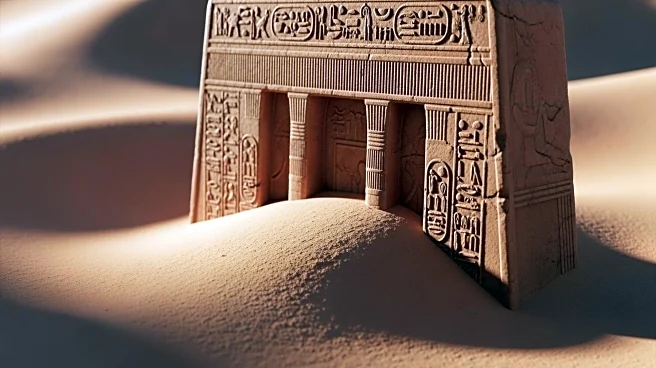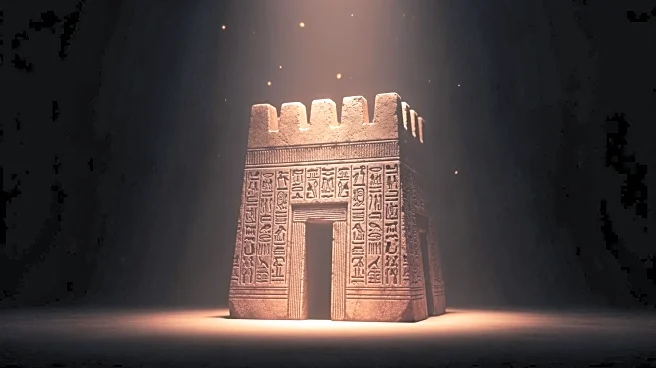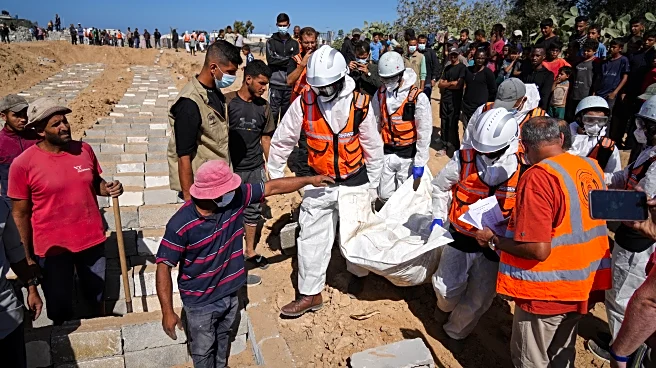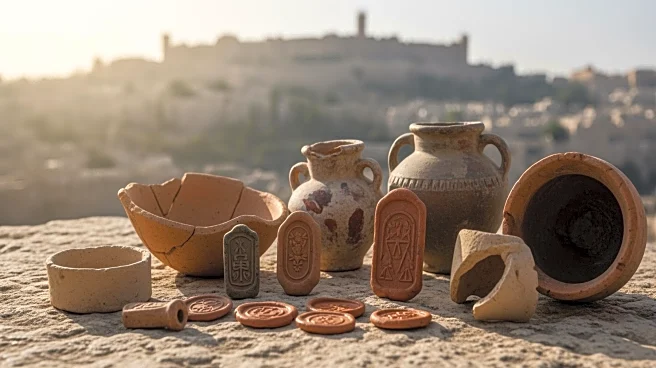What's Happening?
Archaeologists in Egypt have uncovered a 3,000-year-old fortress at the Tell El-Kharouba archaeological site in Sheikh Zuweid, North Sinai. This fortress, dating back to the New Kingdom period, is linked
to the biblical Exodus, specifically the Horus Military Road mentioned in Exodus 13:17. The discovery includes pottery fragments, ceramic vessels, and a jar handle stamped with the name of King Thutmose I. The fortress, covering 86,100 square feet, features eleven defensive towers and was part of a network of strongholds protecting Egypt's eastern borders and trade routes.
Why It's Important?
The discovery of the fortress provides tangible evidence of the historical and military strategies employed by ancient Egyptians, offering insights into their defensive systems and trade practices. It also reinforces the historical context of the biblical Exodus, potentially attracting interest from historians, archaeologists, and religious scholars. The findings contribute to our understanding of Egypt's military history and its role in regional geopolitics during the New Kingdom period. This discovery may enhance Egypt's cultural heritage tourism, drawing visitors interested in ancient history and biblical archaeology.
Beyond the Headlines
The fortress's discovery highlights the advanced engineering and strategic planning of ancient Egyptian civilization, showcasing their ability to construct integrated defensive systems. It also underscores the significance of Sinai as a region with unique civilizational evidence, potentially influencing future archaeological research and exploration. The presence of volcanic stones and fossilized dough remnants suggests a complex supply chain and daily life activities within the fortress, offering a glimpse into the socio-economic aspects of ancient military life.













